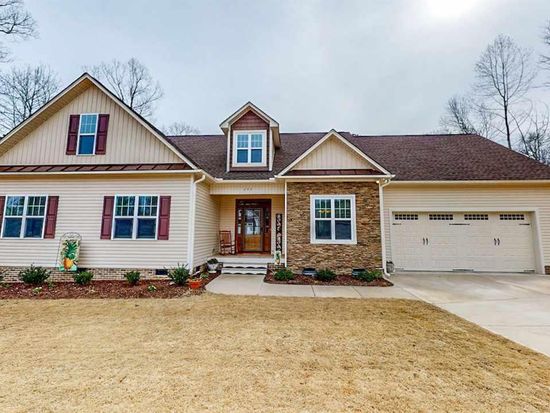×
Knight Executive Education & Conference Center: Good for singles/couples. Not for families. See 57 traveler reviews, 30 candid photos, and great deals for Charles F. Knight Executive Education & Conference Center at Tripadvisor. Find Personals listings in St Louis on Oodle Classifieds. Join millions of people using Oodle to find great personal ads. Don't miss what's happening in your neighborhood.
The Knight House.
×Courtesy of the Library of Congress Photographs and Prints Division, LC-G612-T-08752.
All buildings have a story. That of the Harry F. Knight House is one of stark dualities of affluence and vacancy, of optimistic forethought and crashing reality. With the assistance of careful landscaping and lucky geography, all that remains visible to passersby of this striking estate house is the rambling, vertical line of the roof. It extends above a long grassy knoll like the natural line of a faraway horizon and though this fraction of the house that can be seen from the road is enough to inspire curiosity, the true intrigue of the palatial estate exists deeper than its apex.
In its first claim to notoriety, the Harry F. Knight House boasts a spectacularly renowned architect: Harrie T. Lindeberg. Known for designing the remarkable country houses of the American elite, including the DuPont, Vanderbilt, Armor, Astor, and Pillsbury families, the famed architect was nationally regarded for his fresh take on traditionally influenced estates and his deep consideration of a property’s surroundings. His appreciation for the long, unbroken rooflines and rhythmic groupings of windows of the English Tudor style is seen plainly in the design of the Harry F. Knight House. Lindeberg reportedly selected the positioning of the Tudor Revival style estate from the passenger seat of Harry Knight’s airplane. Using the aerial vantage point, Lindeberg dropped markers on the spot with the best view and highest peak. It would be there where the main house was to be erected.
Pennsylvania trap rock makes up the exterior walls in varying darkened shades. The tiled roof is made of 1-inch thick slates quarried in Vermont—a signature of Lindeberg’s that here mandated the use of 100 10-x-12 inch oak support beams. The interior holds a total of 27 rooms, sized for entertaining. The wide corridors were paneled in chestnut, all five bedrooms were complete with adjoining dressing rooms, the parquet floors were made of pegged oak or marble, and an Adam fireplace, reportedly the first in America, warmed one of the bedrooms. The staff quarters of the estate were similarly substantial; a series of servants’ rooms sat above the estate’s kitchen while a six-room apartment for the chauffeur rested above the garage. Additional features of the house included a walled garden, a gatehouse, and a Prohibition-era wine cellar hidden behind a panel in the telephone room and closed off with a vault door. When the construction was completed in about 1925, the palatial home racked up a building cost of a staggering $1,000,000.

The Harry F. Knight House was named for its first and possibly briefest inhabitant. Harry French Knight, a stockbroker with the firm Knight, Dysart, and Gamble. He assembled the land on which the home was built by purchasing one portion in 1923 and another in 1926. Knight built the house for himself and his wife, Lora Small Moore, whom he had married in 1922, and who largely commissioned the design. As president of the St. Louis Flying Club, Knight grew to know and respect fellow member Charles Lindbergh. During their brief stint in the estate, Knight, one of the financial backers of Lindbergh’s historic flight from New York to Paris in 1927 and of the Spirit of Saint Louis airplane, was known to host the famous aviator on several occasions. A plaque in the house commemorates what was likely Lindbergh’s most noteworthy time in the Knight House: an overnight visit from which he immediately left for New York and the first solo flight across the Atlantic.
The newlyweds lived on the estate for less than three years before their marriage met its end in 1927. Knight’s new bride was the widow of the founder of U.S. Steel, James Hobart Moore. After Moore’s death in 1916, the majority of his $93,000,000 estate was left to Lora. The briefly single millionaire, reportedly unhappy with the house on the hill and with her new husband, moved to Nevada and divorced Knight at the risk of losing almost everything her late-husband had left her. As part of Harry and Lora’s divorce agreement, the striking estate was to be sold.
In a fascinating exchange, the house was sold to Mary D. Ball on September 30, 1927, but was deeded back to Knight just three weeks later on October 19. The reason for this quick change of hands, whether it be a simple mistake in the documentation or a carefully executed plan, remains an unfortunate and curious mystery. After nearly another year in the ownership of Knight, the home sold to Mark and Etta Eiseman Steinberg in May of 1928 for less than $500,000, just half the estate’s construction cost. The substantial monetary loss Knight took on the home seemed to continue throughout his life. In 1930, Knight sold his seat on the New York Stock Exchange and at his death just three years later, his assets amounted to only $51,000.
Like countless others of his time, Mark Steinberg experienced financial hardship during the Great Depression, and put the Knight House back on the market. This, of course, was not an opportune time to sell a property of such scale. The house wasn’t sold until February of 1948, and, at a price of $160,000, followed in its previous pattern of declining worth. The new owner, Emil E. Hoechst, was a banker who saw the home as a good investment. Though Steinberg regained his wealth by the end of 1948, Hoechst was the first owner of the Harry F. Knight House to not experience significant financial suffering while in possession of the estate. For nearly 15 years, Hoechst and his family lived almost exclusively in the north wing of the house, a space originally intended for servants. During his time in the Knight House, he worked to repair the areas that fell to neglect. In an interview with the St. Louis Post Dispatch in 1977, Hoechst commented on his efforts to appropriately restore the estate that had stood vacant for years. “The whole roof had to be gone over,” said Hoechst, “and the gardens cleared out. I had a guy from the old country who stayed with us for one year, working to restore the place just the way it had been. It was a beautiful place, and I spent a fortune on it.”
Some of the fortune paid in restoration was returned to Hoechst in 1959 when he sold the house to David and Madilienne Carter for $200,000. David Carter, a stockbroker and amateur artist who had become recently wealthy, was only 30 years old when he bought the palatial estate. Caught in the alluring convincement that his luck would continue, Carter installed tennis courts, played host to several lavish parties, and converted the estate’s greenhouse into an indoor/outdoor swimming pool equipped with a steel door that could be closed for the winter. His luck, like many of the estate’s owners before him, was unfortunately short-lived. He put the home on the market in 1963 after losing everything in the stock market. After the house sold, David and Madilienne Carter moved to New York in hopes of a fresh start. Their hope, and their remaining money, was not long-lived, however, and David died of a drug overdose in 1971.
In 1966, it was recognized that the estate was too large to be managed by a single inhabitant, and the property was subdivided, making the gatehouse and the Knight House two separate and private residences. The new owner of the Knight House, who purchased the estate in 1968 for $350,000, remains one of the great mysteries of the house. The deed was listed under Ancra Realty Corporation, whose singular function was ownership of the house. The man who inhabited the palatial estate was reclusive and exceedingly private. He moved from a modest home in University City where his neighbors knew him simply as a businessman of some sort. His fortune was made as a byproduct of the Vietnam War, during which his company sold rocket launchers to the U.S. Navy, resulting in $47,000,000 worth of business with the government. Shortly after moving into the Knight House, a grand jury indicted him on 30 counts of conspiracy, deceit, and defrauding the government. After pleading guilty and serving 4 years in prison, he received parole in 1974 and returned to the Knight House to live quietly. Ancra International, the probable parent-entity of Ancra Realty Corporation, designs and manufactures cargo and weapons accessories for the US Military and its allies and still thrives today.
The estate, now noted as a St. Louis County Landmark, retains its vantage point atop the hill. The stories of its history are set between the quarried trap rock like the strengthening links of chainmail, promising its perseverance through the narratives it has yet to absorb. Its walls live and breathe, collecting the echoes of Charles Lindbergh’s anticipatory remarks on what would be the first solo flight across the Atlantic and the boisterous laughter of a party held by a newly-opulent host. The Harry F. Knight House has a memory, as all houses do. It is our job as contributors, as communities, and as human beings, to join in recognizing them.
Learn about more houses with stories by visiting the St. Louis County Landmarks webpage.

Bibliography
Lauer, Derek. “Preservation Plan for the Knight Residence,” April 26, 1993.
Deed of Sale from Mary D. Ball to Harry F. Knight, 19 October, 1927, St. Louis County, Missouri, Deed Book 859 page 628. Recorder’s Office, Clayton, Missouri.
Deed of Sale from Blackacre Realty Company, Inc. to Ancra Realty Corporation, 25 June, 1968, St. Louis County, Missouri, Deed Book 6335 page 2428. Recorder’s Office, Clayton, Missouri.
Knight Dating In Clayton Missouri City
Deed of Sale from David Carter and Madilienne Carter to Blackacre Realty Company, Inc., 1 November, 1966, St. Louis County, Missouri, Deed Book 6092 page 607. Recorder’s Office, Clayton, Missouri.
Deed of Sale from Emma Eppler and Carl David Eppler to Harry F. Knight, 24 October 1923, St. Louis County, Missouri, Deed Book 603 page 539. Recorder’s Office, Clayton, Missouri.
Knight Dating In Clayton Missouri High School
Deed of Sale from Flora Realty & Investment Co. by Flora and Theodore Slupsky to Harry F. Knight, 8 February, 1926, St. Louis County, Missouri, Deed Book 755 page 193. Recorder’s Office, Clayton, Missouri.
Knight Dating In Clayton Missouri Zip
Deed of Sale from Emil E. Hoechst and Elsa A. Hoechst to David Carter and Madilienne Carter, 15 December, 1959, St. Louis County, Missouri, Deed Book 4222 page 136. Recorder’s Office, Clayton, Missouri.
Deed of Sale from Harry F. Knight to Mary D. Ball, 30 September, 1927, St. Louis County, Missouri, Deed Book 859 page 622. Recorder’s Office, Clayton, Missouri.
Knight Dating In Clayton Missouri Map
Deed of Sale from Harry F. Knight to Mark C. Steinberg and Etta Eiseman Steinberg, 23 May, 1928, St. Louis County, Missouri, Deed Book 925 page 393. Recorder’s Office, Clayton, Missouri.
Deed of Sale from Mark C. Steinberg and Etta Eiseman Steinberg to Emil E. Hoechst and Elsa A. Hoechst, 16 February, 1928, St. Louis County, Missouri, Deed Book 2446 page 3. Recorder’s Office, Clayton, Missouri.

“Mrs. H. F. Knight Obtains Divorce in Court at Reno.” St. Louis Post-Dispatch. October 15, 1927.
Pennoyer, Peter and Anne Walker. Harrie T. Lindeberg and the American Country House. The Monacelli Press: New York, 2017.
Knight Dating In Clayton Missouri Restaurants
“The Strange House on the Hill.” St. Louis Post-Dispatch October 30, 1977.